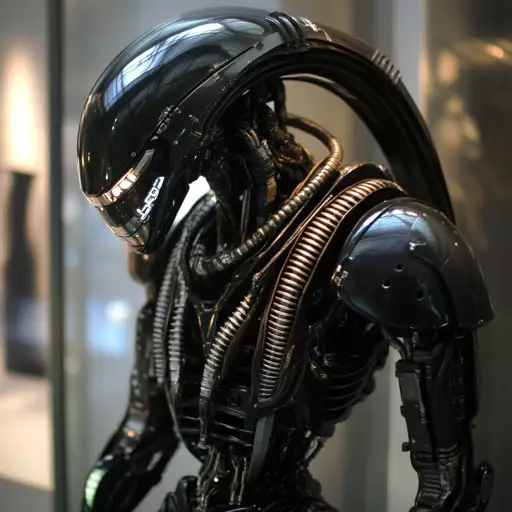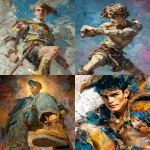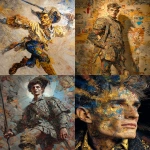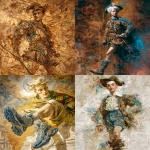Explore the Best AI Image Gallery

AI: The New Brushstroke in the Graphic Design Palette
The realm of graphic design, once solely a domain of human imagination and technical skill, is undergoing a profound transformation. Artificial intelligence (AI), with its ability to analyze patterns, generate visuals, and learn from vast datasets, is emerging as a powerful new tool, reshaping the creative landscape.
Automating the Mundane: AIs Efficiency Boost
One of the most immediate impacts of AI in graphic design is its ability to automate tedious tasks. AI-powered tools can handle repetitive actions like image resizing, color correction, and basic layout adjustments, freeing up designers to focus on more conceptual and strategic aspects of their work. This increased efficiency allows for faster turnaround times and greater productivity.
Beyond Automation: AI as a Creative Partner
AIs capabilities extend far beyond mere automation. Advanced algorithms can now generate original designs, suggest innovative layouts, and even create unique illustrations based on textual prompts. This opens up exciting possibilities for designers to explore new visual concepts, experiment with different styles, and push the boundaries of creativity.
Examples of AI in Action:
- Design Generators: Platforms like Midjourney and DALL-E 2 allow users to input text descriptions and receive AI-generated images, bridging the gap between words and visuals.
- Logo Design Tools: AI-powered tools can analyze a brands identity and generate multiple logo concepts, providing designers with a starting point for further refinement.
- Personalized Marketing Materials: AI can create customized designs for marketing campaigns based on individual customer data, ensuring targeted and effective communication.
Ethical Considerations: Navigating the AI Landscape
As with any powerful technology, the integration of AI into graphic design raises ethical considerations that need careful attention:
- Copyright and Ownership: When AI generates original content, questions arise about copyright ownership and intellectual property rights.
- Bias and Fairness: AI algorithms can inherit biases from the data they are trained on, potentially leading to unfair or discriminatory design outputs.
- Job displacement: While AI can automate tasks, there is concern about potential job losses for graphic designers, requiring upskilling and adaptation to new roles.
Shaping the Future: Trends in AI-Powered Design
The field of AI in graphic design is constantly evolving. Here are some key trends shaping its future:
- Increased Personalization: AI will enable even greater personalization in design, creating unique experiences tailored to individual preferences and needs.
- Integration with Augmented Reality (AR) and Virtual Reality (VR): AI-powered designs will seamlessly integrate with AR/VR environments, creating immersive and interactive experiences.
- Ethical Frameworks and Regulations: As AI becomes more prevalent, establishing ethical guidelines and regulations will be crucial to ensure responsible and equitable use in design.
Conclusion: Embracing the Creative Potential of AI
AI is not a replacement for human creativity but rather a powerful tool that can augment and enhance it. By embracing its potential while addressing ethical considerations, designers can unlock new possibilities, create innovative solutions, and shape the future of graphic design.


](https://images.ai-img.art/thumbnails/150/1614d64dd7156c95db952258978be809eb3db8cea4453fec69c49cbdfe63fa94.webp)





](https://images.ai-img.art/thumbnails/150/3a60737a5b67fa252207ad1ae6db245a26284f53fb5846996bb34515b39ff269.webp)
](https://images.ai-img.art/thumbnails/150/8c3bd422d50d35735d8fb33bd314a79e30e5b150129d5d09bdad822a2007593f.webp)


